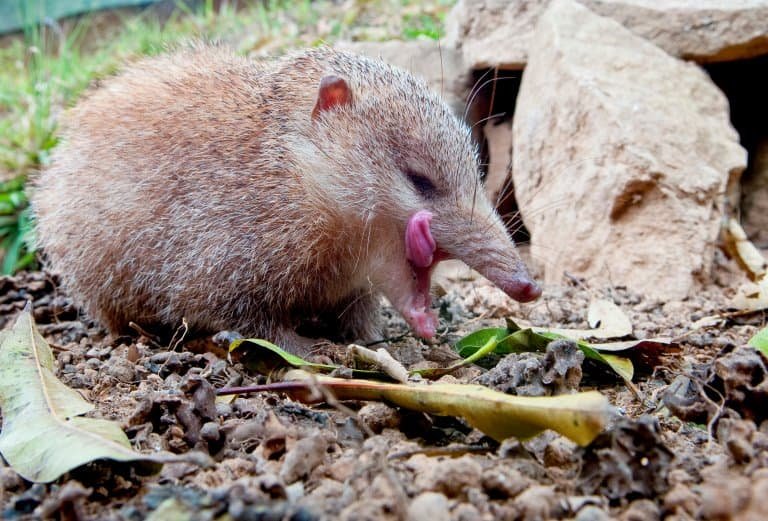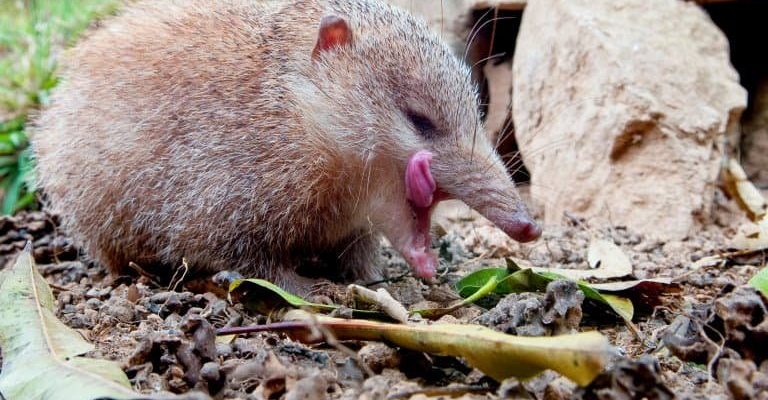
Tenrecs belong to a group of mammals called Afrotheria, which means they have a special kinship with elephants and aardvarks. While they may seem like simple little critters, there’s a whole world of wonder wrapped up in these animals. Let’s explore ten of the most fascinating facts about tenrecs, peeling back the layers like one of their spiky coat quills.
1. Unique Appearance
Tenrecs come in various shapes and sizes, each sporting a distinctive look. You might find them with spiky fur like a hedgehog or sleek, smooth coats that resemble otters. Some are even more unusual, showcasing a vibrant array of colors. Their size can vary quite a bit too, with some being as small as a mouse while others can grow larger than a house cat.
This range of appearances is tied to their habitat. In Madagascar, the different environments—from lush jungles to dry deserts—have led tenrecs to adapt in unique ways. Imagine a tiny creature that can either burrow into the ground or climb trees. It’s like having a Swiss Army knife of animal adaptations!
2. Nocturnal Habits
If you’re hoping to spot a tenrec, you might want to set your sights at night. These little guys are primarily nocturnal, meaning they do most of their foraging and activities after the sun goes down. This behavior helps them avoid predators and cope with the heat of the day.
Being nocturnal isn’t just about sleeping during daylight; it also means they have specialized senses. Tenrecs have keen hearing and smell, which allow them to navigate the dark while searching for food like insects, fruit, and small invertebrates. Imagine living like a secret nighttime ninja, sneaking around while the rest of the world is fast asleep!
3. Highly Diverse Species
The tenrec family tree is impressively diverse. There are about 30 different species of tenrec, each uniquely adapted to their own niche. From the Common Tenrec to the impressive Greater Hedgehog Tenrec, the variety is astounding.
Some species are more social than others. For example, the lesser hedgehog tenrec is known to live in groups, while the golden tenrec is more solitary. It’s like a family reunion where everyone has their own way of being! The diversity within the tenrec species offers a peek into how animals can evolve differently depending on their environment and social needs.
4. Interesting Defense Mechanisms
When it comes to survival, tenrecs have some clever tricks up their sleeves. To protect themselves from predators, many species can roll into a tight ball to shield their vital parts with spiky quills. This isn’t unlike a porcupine’s defense, but it’s all in the varyingly spiky hair of the tenrec.
Additionally, when threatened, some tenrecs can emit a strong odor to deter attackers. This is their way of saying, “Back off!” It’s both fascinating and slightly humorous to think of such a small creature using its scent as armor. Imagine feeling threatened and deciding the best way to handle it is with a “stink bomb” approach!
5. Unique Vocalizations
Tenrecs are known for their vocal talent, too! They can produce a surprising variety of sounds, from high-pitched squeaks to low growls. These calls help them communicate with one another, especially during mating season or when marking their territory.
Interestingly, the vocalizations can change depending on the species. The common tenrec, for example, has been noted to make over a dozen different sounds. Picture a little animal orchestra, where each tenrec plays a different note to create a symphony of sounds in the jungle environment.
6. Exceptional Body Temperature Regulation
One of the most intriguing aspects of tenrecs is their ability to regulate body temperature. Unlike many mammals, tenrecs are somewhat ectothermic, meaning they can adjust their internal temperature based on their surroundings. This quality allows them to thrive in Madagascar’s varying climates.
When it’s hot, they can conserve energy by slowing their metabolism, entering a state of torpor similar to hibernation. It’s like being able to hit a snooze button on life whenever things get a bit too warm. This remarkable adaptation helps them survive in both the sweltering heat and cooler conditions.
7. Breeding and Offspring
When it comes to breeding, tenrecs are quite the dedicated parents. They usually have litters of around 2 to 6 offspring, depending on the species. The mother takes on the primary caring role, often building a nest from leaves and fur to keep her babies safe and warm.
It’s heartwarming to learn that tenrec young are born with their eyes closed and rely heavily on their mother for survival in those early weeks. Watching a mother tenrec caring for her young can be a touching sight, showing just how nurturing these little creatures really are.
8. Environmental Importance
Tenrecs play a crucial role in their ecosystems. By eating insects and other small creatures, they help control populations of pests. This natural pest control is vital, especially in agricultural areas, where tenrecs contribute to a balanced ecosystem.
Moreover, by digging into the soil, they help aerate it, which can promote healthier plant growth. It’s a reminder that even the smallest of animals can have a significant impact on the environment, proving that nature is a well-connected web of life.
9. Conservation Status
Despite their fascinating qualities, many tenrec species are facing threats due to habitat loss and human activity. Deforestation, in particular, poses a significant risk to their survival. As their home shrinks, so does their chance of survival.
Conservation efforts are ongoing to protect these unique creatures and their habitats. Organizations work to educate communities about the importance of preserving not just tenrecs, but the entire ecosystem they inhabit. It’s a collective effort that highlights how humans can work hand in hand with nature to ensure the survival of such extraordinary species.
10. A Symbol of Madagascar
In many ways, the tenrec has become a symbol of Madagascar’s unique biodiversity. Their quirky appearance and fascinating adaptations make them a delightful point of interest for researchers and wildlife enthusiasts alike.
When visiting Madagascar, spotting a tenrec can feel like finding a rare gem in a treasure chest of wildlife. It’s a reminder of the island’s incredible diversity and the importance of protecting these natural wonders for future generations.
As we wrap up our exploration of the tenrec, it’s clear that these little mammals are far more than meets the eye. With their unique adaptations, social behaviors, and critical role in their ecosystems, tenrecs deserve our admiration and protection. Let’s celebrate and advocate for these fascinating creatures, ensuring they remain a part of Madagascar’s vibrant tapestry for years to come.

